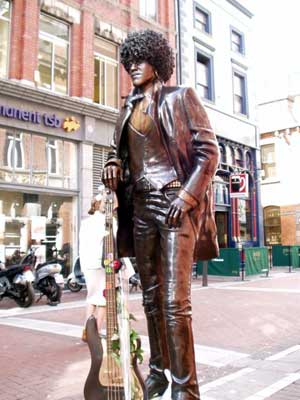Blackness and Race Mixture: The Dynamics of Racial Identity in Colombia. – book reviews
Journal of Social History
Volume 28, Number 2 (Winter 1994)
George Reid Andrews, Distinguished Professor of History
University of Pittsburgh
Peter Wade, Blackness and Race Mixture: The Dynamics of Racial Identity in Colombia, Johns Hopkins University Press, 1993, 432 pages, Paperback ISBN-10: 9780801852510; ISBN-13: 978-0801852510.
The numbers tell the story: the heart of the New World African diaspora lies, not north of the border, but south. During the period of slavery, ten times as many Africans came to Spanish and Portuguese America as to the United States. People of African ancestry found considerably more favorable conditions in North America for their survival and increase than they did in Latin America; nevertheless, by 1990 the estimated 100 million Afro-Latin Americans still outnumbered Afro-North Americans by a factor of more than three to one and accounted for almost twice as large a proportion of their respective national populations.
Though the historiography on Afro-Latin America has expanded greatly during the last twenty years, it continues to differ in at least one important respect from comparable work on the United States: it focuses almost entirely on slavery, and essentially comes to an end at the moment of abolition. While historians in the United States have devoted extensive attention to the post-emancipation period in this country and to the subsequent evolution of race relations during the twentieth century, Magnus Morner’s evaluation, written a quarter of a century ago, still holds true today: historians of Latin America “seem to lose all interest in the Negro as soon as abolition is accomplished. In any case, he disappears almost completely from historical literature.”
race in the region has been shaped by anthropologists and sociologists: Thales de Azevedo, Roger Bastide, Florestan Fernandes, Gilberto Freyre, Marvin Harris, Carlos Hasenbalg, Octavio Ianni, Clovis Moura, Joao Baptista Borges Pereira, and Charles Wagley in Brazil; Angelina Pollak-Eltz in Venezuela; Jaime Arocha and Nina de Freidemann in Colombia; Norman Whitten in Ecuador, to name just a few. Even this literature is not abundant; and, significantly, much of it has been produced by scholars who are not native to the countries they study. Latin American sociologists have proven reluctant to contest their societies’ self-image as “racial democracies”; and as Peter Wade suggests for the case of Colombia, the belief that people of African ancestry have been satisfactorily integrated into their national societies has tended to remove them as objects of study for local anthropologists, who focus instead on the less assimilated, more “primitive” Amerindian populations.
So when three major new works on Afro-Latin America (written, in keeping with the pattern just noted, by foreign anthropologists) appear in a relatively short space of time, it is an event worthy of notice. Only one of those works, Peter Wade’s Blackness and Race Mixture, focuses specifically on questions of race. Nancy Scheper-Hughes’s Death Without Weeping is concerned with “slow starvation … as a primary motivating force in social life” and “the effects of chronic hunger, sickness, death, and loss on the ability to love, trust, have faith and keep it.” (Scheper-Hughes: 15) And John Burdick’s Looking for God in Brazil seeks to explain why Catholic liberation theology and “base communities,” hailed during the 1970s and 80s as engines of progressive political change, are now being displaced among poor and working-class Brazilians by evangelical Protestantism and Afro-Brazilian umbanda. But in order to answer these questions, Scheper-Hughes and Burdick both carried out field research in communities which are majority Afro-Latin American. And since all three authors were able to talk directly to the subjects of their research, they portray those communities with a depth and richness of detail that historians forced to work with sketchy and fragmentary documentary evidence can only rarely achieve.
Paralleling (and in part inspired by) recent scholarship on Brazil, Peter Wade begins by questioning Colombia’s semi-official image of itself as a racial democracy, a mestizo society created by a centuries-long process of race mixture among Europeans, Indians, and Africans. He has little trouble demonstrating that, like other Latin American societies, Colombia is in fact a racial hierarchy in which whiteness is highly valued over blackness and Indianness. Whites are correspondingly over-represented in the upper and middle classes, and nonwhites are over-represented in the working class and among the poor.
Thus far this is familiar ground. Wade pushes on beyond the existing literature, however, by noting that racial groups are unequally distributed not just in Colombia’s class structure; they are unequally distributed across the country’s regions as well. This leads him to ask how the ideology and practice of racial hierarchy vary between areas which are predominantly black and those which are predominantly white. The book thus becomes a comparative study within Colombia, focusing on the Choco, a lowland tropical rain forest bordering Panama, and the highland region of Antioquia…
Read the entire review here.
